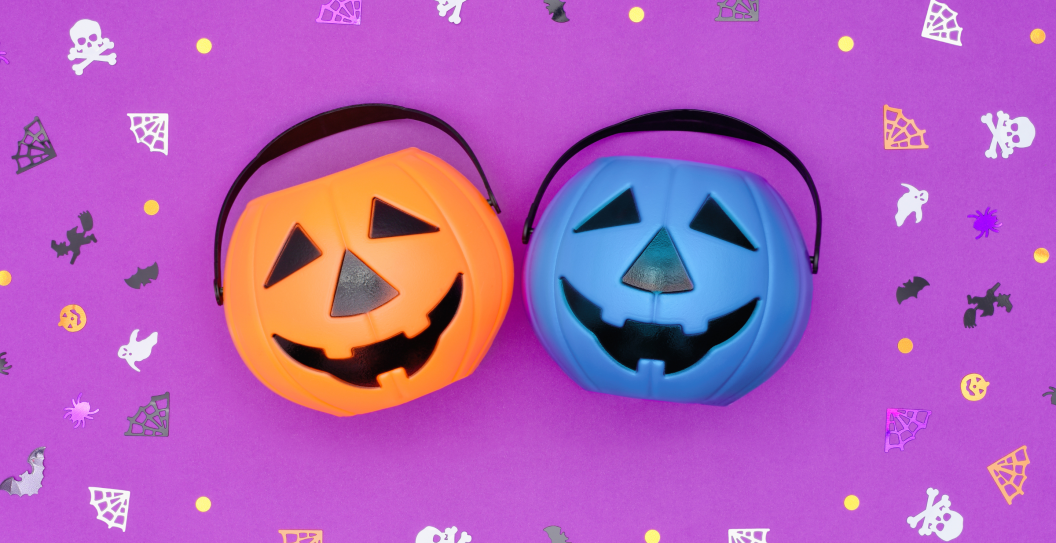Halloween is best known for its iconic orange and black color scheme, with pumpkins lit up on doorsteps and an air of spookiness all around. But these days, you may have picked up on the fact that pumpkins are being used as more than just decorations. They're also sending important messages about some trick-or-treaters' needs.
Videos by Wide Open Country
Food Allergy Research & Education (FARE) once decided they wanted to help kids with food allergies enjoy Halloween without fear. Their idea? The teal pumpkin. It was established that if you spotted a teal pumpkin on someone's porch, that meant they had non-food treats, like stickers or toys. A smart and kind move, right?
But then came 2020 with the COVID pandemic, shaking up all our usual routines, including trick-or-treating. Some folks wanted a way to show that their house was safe for kids to come knocking. Enter: the purple pumpkin. This trend was kicked off by a viral social media post suggesting that a purple pumpkin on your porch was a signal that you were taking precautions and it was safe for kids to get their candy fixes there.
However, like all things viral, sometimes messages get mixed. While many embraced the purple pumpkin as a COVID-safe sign, others started to wonder if there was another meaning behind it. After all, purple is also recognized as a color for domestic violence and Alzheimer's awareness, among others. So, if you see a purple pumpkin this year, while it could be a sign of a COVID-safe home, it's also worth remembering that the color can symbolize other important messages too. Always a good idea to check with the homeowner, just in case!
What do purple pumpkins mean?
Purple pumpkins can have a couple of meanings, depending on context. It also seems to depend on what area you live in, as there doesn't appear to be a singular meaning.
- COVID Safety: As mentioned earlier, there was a social media trend in 2020 suggesting that a purple pumpkin on your porch signaled that you were taking precautions related to the COVID pandemic. That meant it was reasonably safe for trick-or-treaters to stop by your house. Now that we're not living day-to-day in the middle of the pandemic anymore, at least for the most part, it seems this might not be as applicable everywhere.
- Epilepsy Awareness: Outside of the Halloween context, the color purple is recognized as a symbol for epilepsy awareness. The Purple Pumpkin Project was started by a parent in Connecticut after his son was diagnosed with epilepsy. The idea was to put out a purple pumpkin to raise awareness and start a conversation about epilepsy. This could be a tradition some are carrying on today.
It's worth noting that meanings can vary by region and community. If you see a purple pumpkin and are curious about its specific meaning, it's always a good idea to ask the person displaying it. They're likely using it as a conversation starter, so they'll probably appreciate the interest. And if you have any ideas for your own context, you're always able to come up with and explain those to visitors, too.
The history of purple pumpkins
The use of purple has actually been used for years by The Epilepsy Foundation. The organization started The Purple Pumpkin Project as a way to encourage people to paint their fall pumpkins purple at Halloween to raise epilepsy awareness. The project has been running since 2012.
"The more people talk about purple pumpkins, I think the more people who have epilepsy will call out the fact that that is an initiative of the Epilepsy Foundation and it is something that the community really relates to," Jon Scheinman, Director, Youth Programs, The Epilepsy Foundation told Mid Michigan NOW.
So this year, make sure you have a plan with your painted pumpkins. If you want to have purple pumpkins to support The Epilepsy Foundation, just know that you also might have some people showing up at your door on Halloween night thinking that you are encouraging safe trick or treating.
This article was originally published in 2020 and updated in 2023.




